Unlock the Magic in Your Story Now
Get the Free 20 questions to Ask Before Launching Your Idea workbook when you sign up for occasional updates.
Get the Free 20 questions to Ask Before Launching Your Idea workbook when you sign up for occasional updates.
Why Not Go First?
filed in Marketing, Storytelling, Strategy
 An article about successful disruptive businesses like Warby Parker or Square spreads like wildfire through social media channels and whole libraries could be filled with stories about what makes Apple unique. It’s natural to want to learn from the successes of others and to wonder how we can borrow a bit of their magic.
An article about successful disruptive businesses like Warby Parker or Square spreads like wildfire through social media channels and whole libraries could be filled with stories about what makes Apple unique. It’s natural to want to learn from the successes of others and to wonder how we can borrow a bit of their magic.
Following in their footsteps might seem like a shortcut, the irony being that pioneers mostly succeed by being pioneers—by doing what others don’t dare to do, because it isn’t obvious or easy.
Our biggest learnings and successes come from going first. You don’t have to be ‘the next Apple’ to create your own brand of magic.
Image by Paul Mullett.
Share this article
Life After Launch Day—Introducing The One Page Marketing Plan
filed in Marketing, Storytelling, Strategy
 It’s not hard to remember the lead up to the birth of your first child. Forty weeks of sheer focus on everything from what cheese to eat—or not to eat, to a birth plan that read like a military operation. I always found it odd that there was a ten-point plan for every eventuality during the twenty hours of labour and yet we had no plan for how to navigate the next twenty years after that.
It’s not hard to remember the lead up to the birth of your first child. Forty weeks of sheer focus on everything from what cheese to eat—or not to eat, to a birth plan that read like a military operation. I always found it odd that there was a ten-point plan for every eventuality during the twenty hours of labour and yet we had no plan for how to navigate the next twenty years after that.
Giving birth to ideas is equally seductive. Thoughts about what it will feel like to see your idea (innovation, product, service, book, video, designs) in the world are what drives people to push through when the going gets tough. Often though that vision begins and ends with launch day, with most of your energy being focused on giving birth to the project.
Day one is easy to imagine—but what’s the plan for day two?
Below is a roadmap to help you start thinking about life after launch day. This is simply a template of touchpoints, it doesn’t become a plan until you begin to find answers to questions about what the future might look like. Which must be easier to predict than the first twenty years of a child’s life.
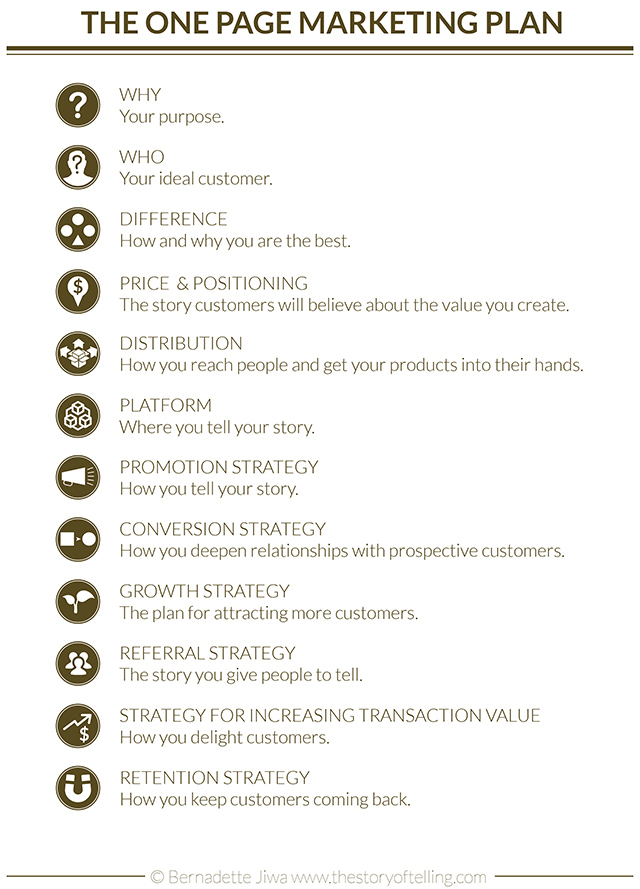
FREE PDF DOWNLOAD THE ONE PAGE MARKETING PLAN
If you get my monthly newsletter look out for The Marketing Plan Workbook next month.
Image by Chimpr.
Share this article
What’s More Important Than Building Awareness?
 Ask any business owner what their most pressing problem is and ‘building awareness’ is sure to be on the list. Maybe it’s on your list too? In a world where it’s harder to get attention, gaining mind share is a priority for everyone.
Ask any business owner what their most pressing problem is and ‘building awareness’ is sure to be on the list. Maybe it’s on your list too? In a world where it’s harder to get attention, gaining mind share is a priority for everyone.
We think that if we can just get a few more people to know about us that we’ll be all set.
I often tell the story of the two side-by-side cafes in our neighbourhood. On days when there is a line of twenty people waiting for either a table or a takeaway coffee at one, the other is virtually empty. We all know the empty cafe is there, we can’t miss it…and yet nothing changes. It’s not that the owners don’t care, it’s that all of their energy is focused on tactics that get people to notice.
Perhaps the bigger questions for them to consider (and maybe us too), before building awareness with more signs and new menus is—why will one person care that we’re here in the first place? What are we doing that’s going to compel that person to tell two friends and then come back tomorrow?
What’s more important than building awareness is what you plan to do with it once you’ve got it, because top of mind is not the same thing at all as close to heart.
Image by Patrick Gage Kelley.
Share this article
Don’t Make Marketing Your Enemy
 I often have conversations with people that start something like this:
I often have conversations with people that start something like this:
“I love my work (product, service, designs, vocation and so on), but I hate marketing. People who create often worry if they spend too much time marketing, that there will be no time left to do the work they care about—which they remind me is the whole point.
But, isn’t the whole point to create something for people and to have your work make an impact in the world?
If that’s true then you have an obligation to help those people to find you.
It might not be ad campaign, a blog or a Facebook account, but you need some kind of plan.
Don’t make marketing the enemy of your work, find a way to make it serve what you do and why, instead.
Image by Brian Auer.
Share this article
Tapping Into Empathy
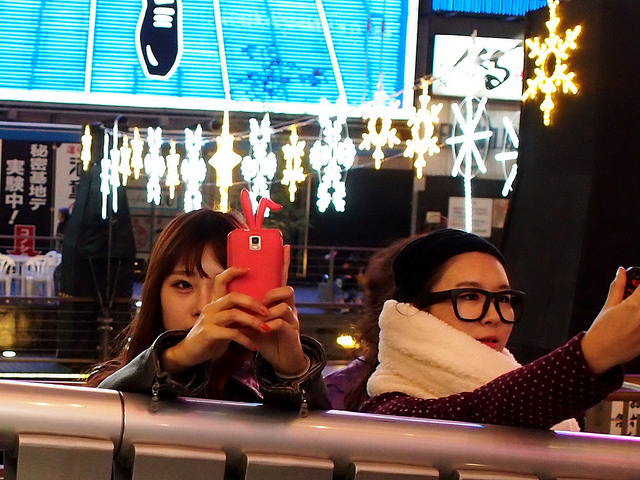 Wherever you are right now stop what you’re doing and listen to the people and the conversations going on all around you. I’ve been working in public places a lot recently and here’s what I’ve found. Nobody is listening to anybody—not really. They’re pretending to listen while they wait for their turn to speak, but mostly their words are forgotten before the reach the ears of the listener. It’s hard to be heard in a world where people have never wanted to matter more as individuals.
Wherever you are right now stop what you’re doing and listen to the people and the conversations going on all around you. I’ve been working in public places a lot recently and here’s what I’ve found. Nobody is listening to anybody—not really. They’re pretending to listen while they wait for their turn to speak, but mostly their words are forgotten before the reach the ears of the listener. It’s hard to be heard in a world where people have never wanted to matter more as individuals.
One of the kindest things you can do for your customers is to take time to really see them.
Here are two tools to help you.
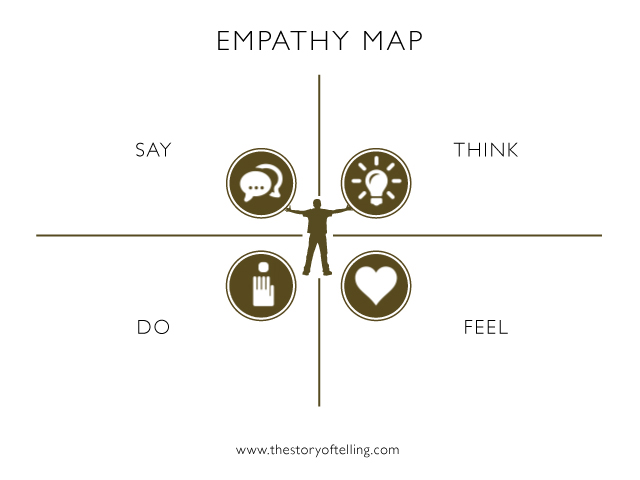
Download and use the Empathy Map PDF to help you understand your customer’s perspective.
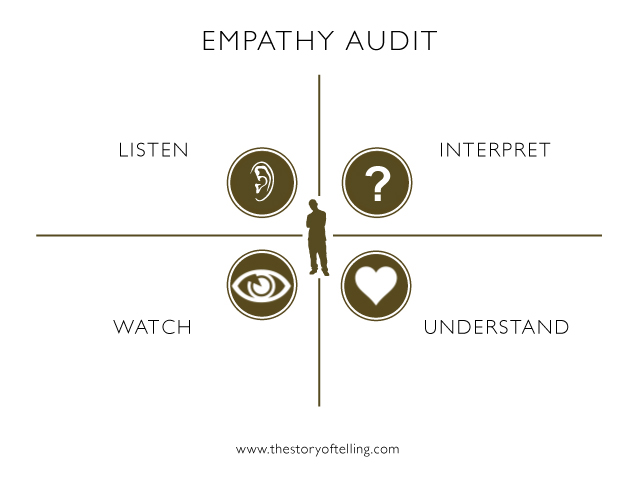
Download and use the Empathy Audit PDF to help you evaluate your practice.
It turns out that practicing empathy and understanding your customer’s perspective is not just good for customers, it’s good for business too.
Image by William George.
Share this article
Relevance Is The New Remarkable
 I will never see the taxi driver who picked me up from JFK again. He doesn’t have to worry that he tried to overcharge me and he doesn’t care if it’s me, or one of a hundred other visitors in the back seat tomorrow. Uber, on the other hand, knows when I last booked a car with them. They know who drove me, exactly how long it took, where he dropped me off and most importantly how I felt when I left the car. Uber remembers more about where I was, when than I do myself.
I will never see the taxi driver who picked me up from JFK again. He doesn’t have to worry that he tried to overcharge me and he doesn’t care if it’s me, or one of a hundred other visitors in the back seat tomorrow. Uber, on the other hand, knows when I last booked a car with them. They know who drove me, exactly how long it took, where he dropped me off and most importantly how I felt when I left the car. Uber remembers more about where I was, when than I do myself.
When I return to the same hotel reception for the third time in 18 months, they ask me again if this is my first stay with them. How is it possible in 2014 that the receptionist doesn’t know? She tells me not to forget the ‘wine hour’ with a knowing smile. Free wine for an hour every night before dinner is obviously the highlight of many a trip. So why am I expecting her to know that I don’t drink wine and to understand that her comment is completely irrelevant to me? My Airbnb host meets my oldest son so that she can give him the keys we need to her apartment when we arrive in Sydney. They have a cup of tea together, and she finds out that we are into good coffee and might use the local gym, so she plots the great coffee places on a map, stocks up on Nespresso pods and her gym membership card is there for us when we arrive, just in case we feel like using it.
I can roam the floors of Barnes & Noble for hours on end, and no assistant will make a recommendation to me because they have no clue what I might be interested in. Amazon’s whole business is built on understanding exactly what I want and giving me as many shortcuts to that as possible.
When I was growing up, our local butcher knew which cuts of meat my mother would buy on any given day. He knew when we had visitors from England and when money was tight because of how my mother’s shopping habits changed. He took that kind of information in so that he could use it to serve her better and he did that for every one of his customers. Ironically progress, growth and innovation led us not to expect that same level of personalised service for a couple of decades. Now technology is helping to take us back, but it’s the humanity that drives the entrepreneurs and business owners who build the technology that enables meaningful experiences and not their platforms and functionality that is driving this new wave of relevance.
Technology is not just taking us forward—it’s taking us back. It’s giving us back the ability to better understand our customers so that we can be not only useful, but also meaningful to the people we serve. Upstarts like Uber and Airbnb are stealing a march on their competitors not because they have information about us, but because of how they intentionally build organisations that use that information to create better experiences—ones that make us feel good and give us a story to tell.
What we crave more than the commodity we think we are paying for is to be understood. What we want more than being driven to our destination, a comfortable bed for the night, or even a book we can get our teeth into, is to really be seen. What people want more than responsive organisations is personal relevance. The value isn’t just in the data we collect. It’s how we use it to make people’s lives better that counts.
And the flip side is you don’t always need an app for that.
Image by ChrisJL.
Share this article
Empathy Is The Killer App
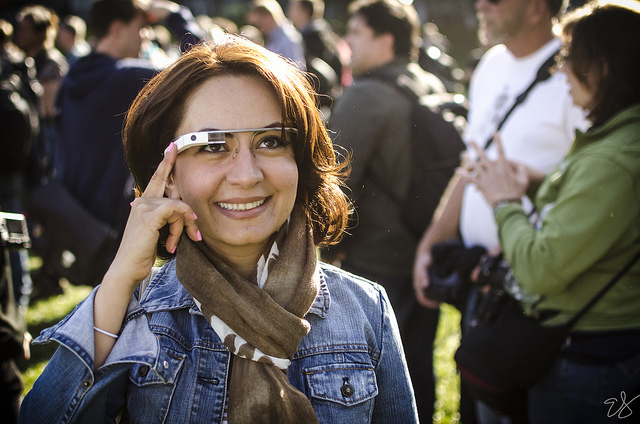 One of the reasons that upstart companies like GoPro have been able to steel a march on their much better resourced competitors like Sony, has been their ability and efforts to develop products for their customers by truly understanding who those customers are and what they want.
One of the reasons that upstart companies like GoPro have been able to steel a march on their much better resourced competitors like Sony, has been their ability and efforts to develop products for their customers by truly understanding who those customers are and what they want.
It’s not possible to create products, services or innovations that fly without understanding people first. Google can leverage access to all the money, data and expertise in the world, but the company has struggled to make Google Glass resonate because of lack of empathy, according to one of the product’s first evangelists Robert Scoble, who recently stopped wearing his because of how Glass wearers are perceived. Now ironically, one of Google’s biggest challenges is teaching Glass users how to be empathetic while they are wearing it.
It turns out that there really is no substitute for standing in your customer’s shoes. You can have the best product in the world, but if people don’t buy into the story you’ve got a uphill struggle on your hands.
Image by Erica Joy.
Share this article
Who Decides What Wins?
filed in Marketing, Storytelling, Strategy
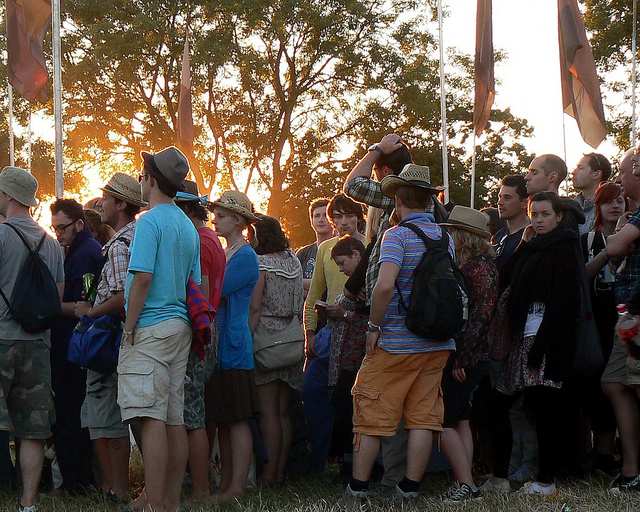 The app developer will spend hundreds of man hours writing lines of perfect code in the hope of making his final product the best in the world. The cafe owner could pull thousands of shots in order to create the perfect cup every time. The entrepreneur might invest months agonising over design decisions to launch with a more compelling website. The author can labour for years crafting perfect sentences that will surely make his book worthy of a slot on the bestseller list.
The app developer will spend hundreds of man hours writing lines of perfect code in the hope of making his final product the best in the world. The cafe owner could pull thousands of shots in order to create the perfect cup every time. The entrepreneur might invest months agonising over design decisions to launch with a more compelling website. The author can labour for years crafting perfect sentences that will surely make his book worthy of a slot on the bestseller list.
And yet—they have less control over what the people who buy their end product believe, feel, think and say than they would like to imagine. When Cadbury ‘improved’ the shape of their chocolate bars (a decision a behemoth brand would not take or implement lightly), customers pushed back.
We might know that our product really is the best in the world, but it isn’t us who gets to decide. What we do and what we ask customers to believe is only part of the story. It’s humbling to realise that the people we serve, not our technologists, publishers, innovators, designers or marketing departments decide what’s worthy and what wins.
Image by Joe.
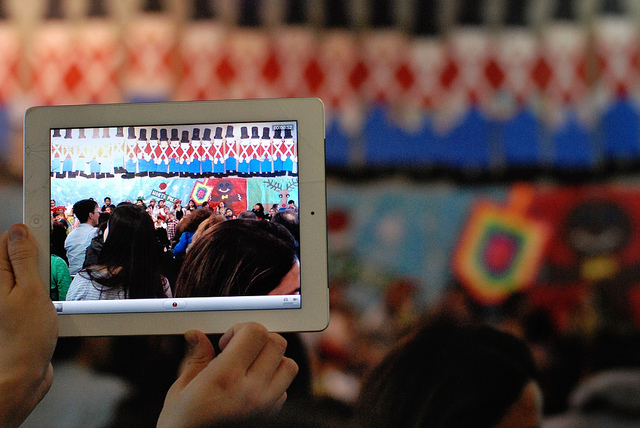 Let’s consider how the business world has been turned on its head in less than a decade.
Let’s consider how the business world has been turned on its head in less than a decade.